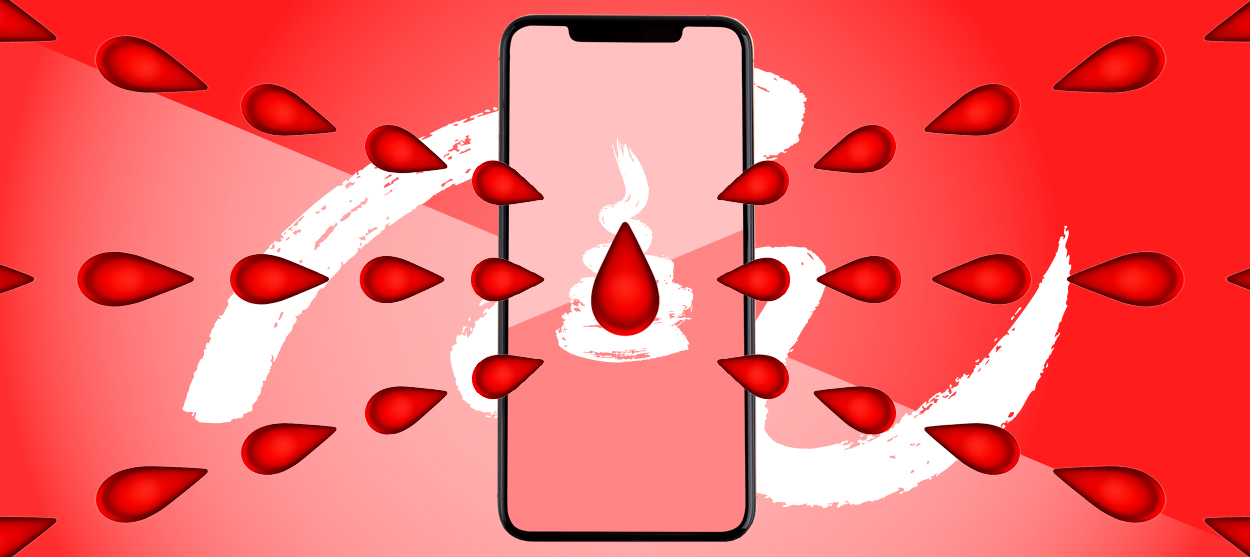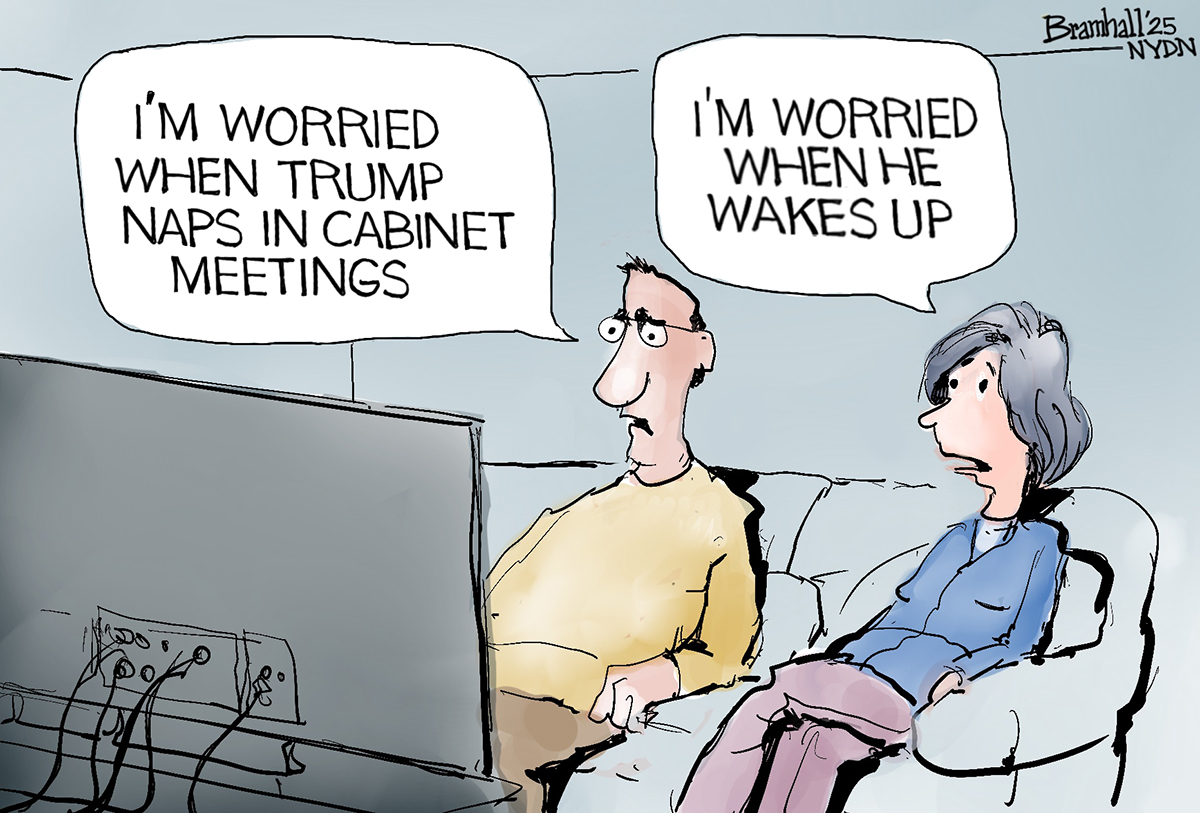The long-awaited blood emoji is finally here
But what does it mean?


It's a bad day to be the bleeding syringe emoji.
For years, the baffling symbol — depicted on most devices as a syringe spewing flecks of blood (or Kool-Aid...?) — was the grim lone option for anyone who wanted to say anything nonverbally about blood. For iPhone users, all that changed Monday, when Apple rolled out iOS 13.2, an update that pushed a previously approved 398 additional symbols onto emoji keyboards. In addition to new icons representing yo-yos, auto rickshaws, sloths, motorized wheelchairs, mechanical arms, waffles, juice boxes, and banjos, Apple supplied us with U+1FA78: a suggestive red droplet.
The "drop of blood" symbol, announced earlier this year and already available on Android and Windows, was immediately rebranded as the "period emoji" by women's health organizations in the hours after its approval by the Unicode Consortium, although it has proven to defy such narrow interpretation. After all, part of what makes the blood emoji so powerful, essential, and possibly even dangerous is how many groups are clamoring to claim it as their own.
The Week
Escape your echo chamber. Get the facts behind the news, plus analysis from multiple perspectives.

Sign up for The Week's Free Newsletters
From our morning news briefing to a weekly Good News Newsletter, get the best of The Week delivered directly to your inbox.
From our morning news briefing to a weekly Good News Newsletter, get the best of The Week delivered directly to your inbox.
We have Plan International UK, a global children's nonprofit, and the U.K.'s NHS Blood and Transplant organization to thank for the blood emoji. Plan UK had previously attempted to submit a period-specific emoji — a frankly hideous design that depicted two blood droplets soiling a pair of panties — in 2017, only to have it rejected. By making the symbol more general, applicable now to both periods and blood donations, the British health organizations managed to earn the approval of the emoji overlords back in February of this year.
Women's health groups were alternately thrilled and dismayed by the passage of the body fluid symbol. "Girls, women, and other menstruators told us this emoji would help them talk more freely about their periods, which is why we campaigned so hard to make it a reality," Plan UK's chief executive, Rose Caldwell, told The Telegraph. Shannon Palus, writing for Slate, argued that the generic blood emoji simply wasn't "good enough," and that "periods are an indisputable part of life. They should be part of our emoji-arsenal." Writing for The Week, Ruth Margolis added that the symbol is "prudish," arguing "the period emoji is giving people a way to further avoid talking about periods with actual words. It's our tech age equivalent of referring to menstruation in hushed, shameful tones as a woman's 'time of the month.'"
And while a large part of destigmatizing periods involves getting past the revulsion to blood, a tampon, pad, and menstrual cup emoji could have served a more precise purpose if the Unicode Consortium really did care about representing women's health on the keyboards.
Nevertheless, emoji usage often relies on associations, in which innocent eggplants, peaches, and oysters can become stand-ins for certain parts of the human anatomy. In an article on the approval of the blood emoji from February, NPR detailed how one 22-year-old used the "'crying' emoji to describe her mood, the 'knife' emoji to describe painful cramps, and the 'sweat' emoji … to illustrate a heavy flow." Rather than prove a deficiency, though, such an example shows the ingenuity and flexibility of modern emoji usage and what the pictographic language loses when you make it too explicit (if you wanted to outright say something, you would just use words). What's more, keyboards already have symbols that can be used in cases that are purely intended as medical: blood type emojis.
A free daily email with the biggest news stories of the day – and the best features from TheWeek.com
It's far easier to imagine the blood emoji's pop culture meanings, which will almost certainly be its primary use. Think of the endless possibilities: Deploy one red drop to stan Le Chiffre, the James Bond villain who weeps blood in Casino Royale, or use a hundred of them in a textual tidal wave to represent the elevator scene in The Shining. Asked about my thoughts on The Irishman, I might reply "house emoji + blood emoji + old man emoji," with nine exclamation points. I could even relay my once-every-five-years attendance of Christmas mass to the group chat with "wine emoji + blood emoji + prayer hands emoji." I might recommend a new true crime podcast with the symbol, or use it to quickly caption a hospital selfie ("kitchen knife emoji + blood emoji + hand-in-face emoji").
Speaking personally, though, I happen to have a vested interest in the use of the period née murder emoji. But I haven't spent hours trying to figure out visual shorthand for "gushing blood" out of morbidity alone; I'm one of three million Americans in the bleeding disorders community, which includes people with hemophilia, von Willebrand disease, and other rare factor deficiencies. And until there is a bruise, black eye, or bloody nose emoji, the drop of blood is the best way to cryptically alert my mother that I need another Costco shipment of tissues.
Still, I'm not so naïve as to think the symbol is my community's alone; just look at the transformation of the frog emoji into an alt-right rallying cry, ruining the icon for herpetologists everywhere. It's especially easy to see where something as unspecific as a drop of blood could likewise be co-opted for hateful purposes, as a nationalist symbol, for example, celebrating lineage or a warped sense of "purity." The symbol could likewise become a dog whistle for neo-Nazi groups like Blood and Honour, or an anti-Semitic reference to blood libel or vandalism involving pig's blood. It could even, at its most simple, be used as a general call for violence.
That's a risk inherent to the business of approving emojis, though. The symbols are intended to be as broad as possible, otherwise you end up with those sad reject emojis that never get used (you know the ones). Recently, though, the opposite has been the case: the Unicode Consortium is getting more and more precise as their visual vocabulary expands. In addition to the blood drop, iOS 13.2 also introduced gender neutral people, new hair, disability symbols, India-specific icons, and multi-racial couples. The trouble only arises when people decide to make generic symbols theirs alone.
Right now we should be celebrating assorted feminine hygiene product emojis, person-getting-their-blood-drawn emojis, I'm-in-the-mood-to-watch-Saw emojis. Heck, we should be celebrating stitches emojis. And we should have gotten that simple blood emoji long ago; that one belongs to us all.
Jeva Lange was the executive editor at TheWeek.com. She formerly served as The Week's deputy editor and culture critic. She is also a contributor to Screen Slate, and her writing has appeared in The New York Daily News, The Awl, Vice, and Gothamist, among other publications. Jeva lives in New York City. Follow her on Twitter.
-
 5 sleeper hit cartoons about Sleepy Don
5 sleeper hit cartoons about Sleepy DonCartoon Artists take on cabinet meetings, a sleepy agenda, and more
-
 Political cartoons for December 6
Political cartoons for December 6Cartoons Saturday’s political cartoons include a pardon for Hernandez, word of the year, and more
-
 Pakistan: Trump’s ‘favourite field marshal’ takes charge
Pakistan: Trump’s ‘favourite field marshal’ takes chargeIn the Spotlight Asim Munir’s control over all three branches of Pakistan’s military gives him ‘sweeping powers’ – and almost unlimited freedom to use them
